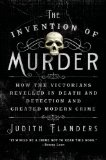Summary | Excerpt | Reading Guide | Reviews | Beyond the book | Read-Alikes | Genres & Themes | Author Bio

The interwoven stories of two men whose lives intersect during one of the greatest criminal chases of all time - Hawley Crippen, a very unlikely murderer, and Guglielmo Marconi, the obsessive creator of a seemingly supernatural means of communication.
A true story of love, murder, and the end of the world’s “great hush”
In Thunderstruck, Erik Larson tells the interwoven stories of two men—Hawley Crippen, a very unlikely murderer, and Guglielmo Marconi, the obsessive creator of a seemingly supernatural means of communication—whose lives intersect during one of the greatest criminal chases of all time.
Set in Edwardian London and on the stormy coasts of Cornwall, Cape Cod, and Nova Scotia, Thunderstruck evokes the dynamism of those years when great shipping companies competed to build the biggest, fastest ocean liners, scientific advances dazzled the public with visions of a world transformed, and the rich outdid one another with ostentatious displays of wealth. Against this background, Marconi races against incredible odds and relentless skepticism to perfect his invention: the wireless, a prime catalyst for the emergence of the world we know today. Meanwhile, Crippen, “the kindest of men,” nearly commits the perfect crime.
With his superb narrative skills, Erik Larson guides these parallel narratives toward a relentlessly suspenseful meeting on the waters of the North Atlantic. Along the way, he tells of a sad and tragic love affair that was described on the front pages of newspapers around the world, a chief inspector who found himself strangely sympathetic to the killer and his lover, and a driven and compelling inventor who transformed the way we communicate. Thunderstruck presents a vibrant portrait of an era of séances, science, and fog, inhabited by inventors, magicians, and Scotland Yard detectives, all presided over by the amiable and fun-loving Edward VII as the world slid inevitably toward the first great war of the twentieth century. Gripping from the first page, and rich with fascinating detail about the time, the people, and the new inventions that connect and divide us, Thunderstruck is splendid narrative history from a master of the form.
The dual-story that worked so well in The Devil in The White City does not work quite as well here. The connection between the two halves of Thunderstruck feel a little strained; while H.H. Holmes committed his murders against the backdrop of the World's Fair, there are years between Marconi inventing the wireless and Crippin's undoing at the hands of this cunning new invention - years that require Larson to jump back and forwards in time which makes for a slightly awkward read. In addition, occasionally Larson's digressions in Thunderstruck are just a little too tangential. Having said that, if you've enjoyed books such as Simon Winchester's The Professor and the Madman, and of course, The Devil in The White City, you're unlikely to find yourself disappointed by Thunderstruck...continued
Full Review
(458 words)
This review is available to non-members for a limited time. For full access,
become a member today.
(Reviewed by BookBrowse Review Team).
Winner of the 1909 Nobel Prize, Guglielmo Marconi was born in Italy in 1874, the son of an Italian country gentleman and Englishwoman, Annie Jameson. He was intrigued by electrical science from an early age and at just 21 years of age he succeeded in sending wireless signals over a distance of one and a half miles. A year later, in 1896, he was granted the world's first patent for a system of wireless telegraphy, and shortly after formed The Wireless Telegraph & Signal Company Ltd. In 1890 he took out his famous patent No. 7777 for "tuned or syntonic telegraphy". The following year he proved that wireless signals were not effected by the curvature of the earth by transmitting a wireless signal across the Atlantic ...
This "beyond the book" feature is available to non-members for a limited time. Join today for full access.

If you liked Thunderstruck, try these:

by Judith Flanders
Published 2014
In this fascinating exploration of murder in the nineteenth century, Judith Flanders examines some of the most gripping cases that captivated the Victorians and gave rise to the first detective fiction.

by Daniel James Brown
Published 2014
For readers of Laura Hillenbrand's Seabiscuit and Unbroken, the dramatic story of the American rowing team that stunned the world at Hitler's 1936 Berlin Olympics



Good as it is to inherit a library, it is better to collect one.
Click Here to find out who said this, as well as discovering other famous literary quotes!